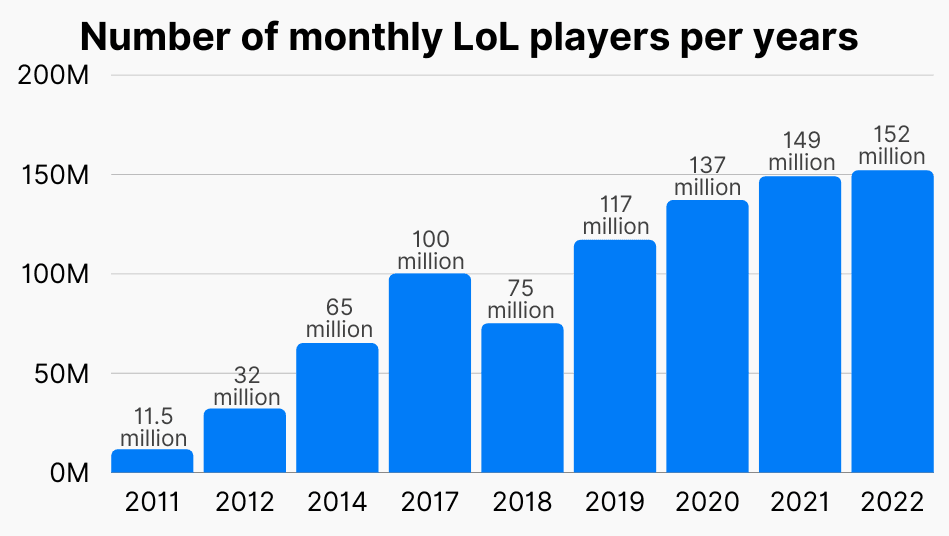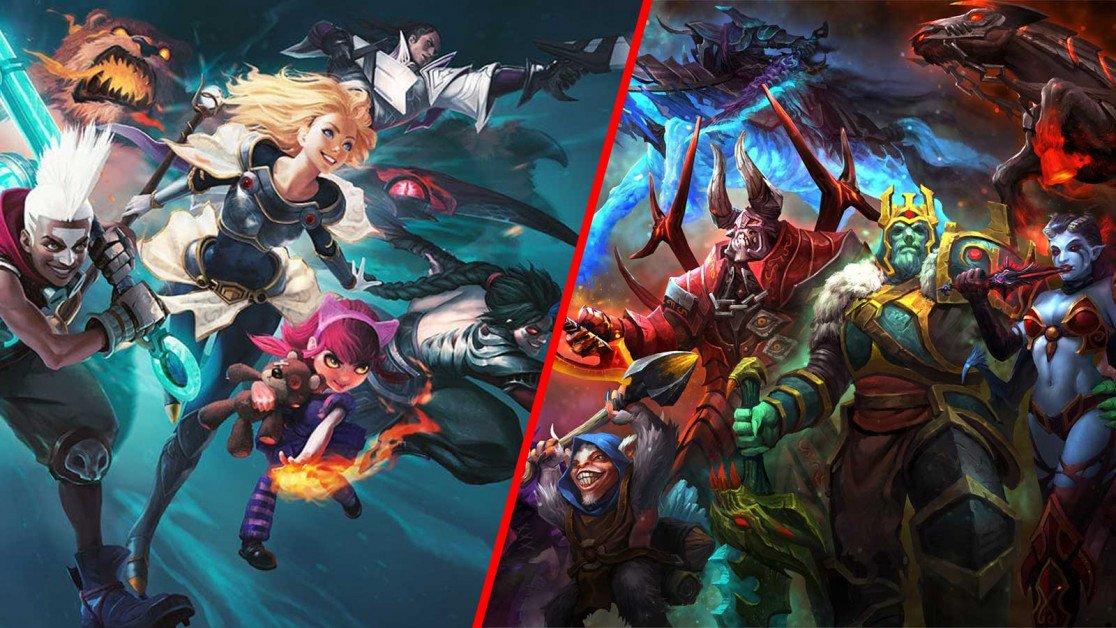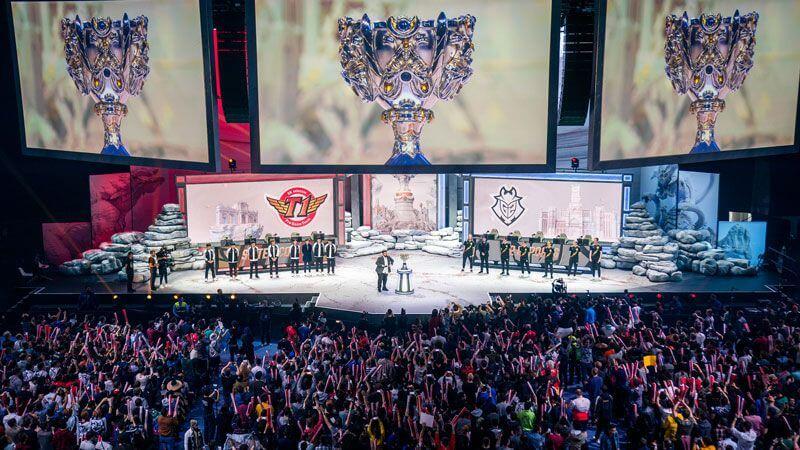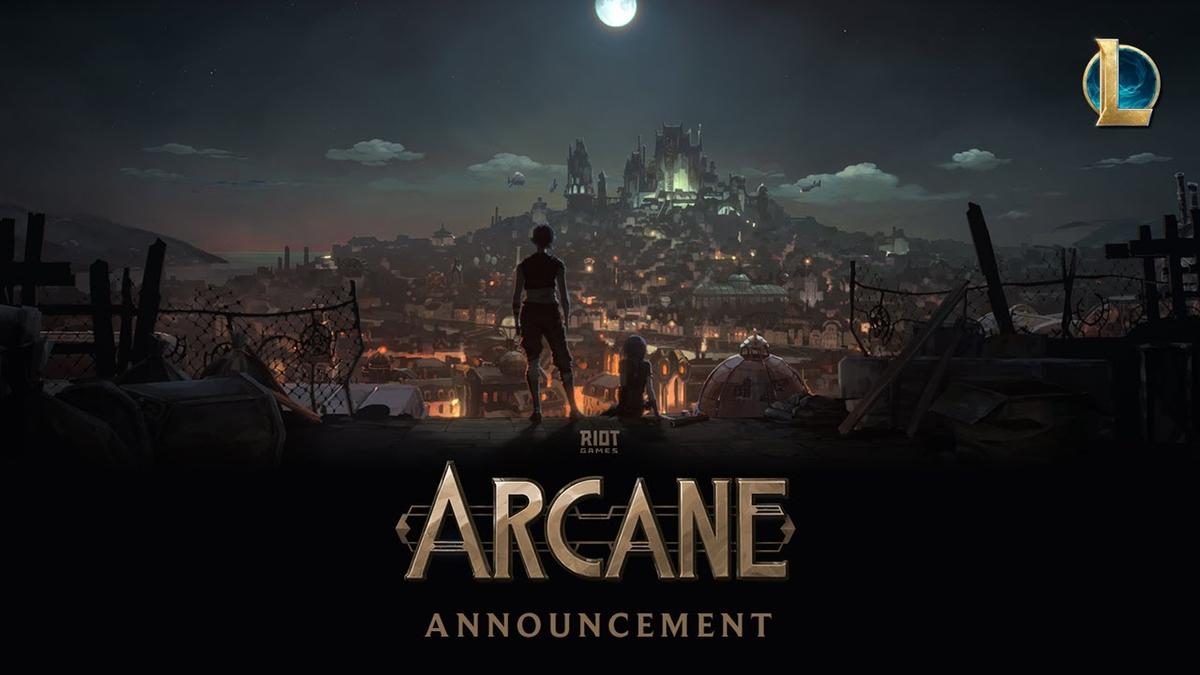League of Legends Player Count: Today and Through the Years
League of Legends is a worldwide gaming phenomenon, whose player count has skyrocketed through the years, nowadays reaching the hundreds of millions. From its humble beginnings to its record-breaking number of players, we will explore the history of League of Legends in relation to its ever-growing audience.
A Brief History of League of Legends
League of Legends has come a long way since its inception. It was released in 2009 by Riot Games, then a small gaming studio of aspiring developers. With its roots deep in the Warcraft III mod Defence of the Ancients (DotA), LoL became a standalone game with the same concept, but now reaching a much wider audience, due to its free-to-play nature.

As with most new franchises, LoL had a modest player count at the beginning, but word of mouth spread quickly. Not only was the game free-to-play, but it was way more accessible in terms of mechanics and champion pool.
By the early 2010s, League of Legends had already become a global phenomenon. Frequent updates, engaging gameplay, and expanding roster of champions and skins, not only attracted new players but kept them coming back over and over again. Regional servers and local events helped foster communities all over the world.
Today, League of Legends is played in virtually every region and is massive in all of North and Latin America, Europe, and Asia. Its recently-launched mobile spin-off Wild Rift tapped into the mobile market as well, further increasing the franchise’s towering presence in gaming.
Esports and the Competitive Scene
The competitive aspect of League of Legends has always played a crucial role in sustaining the game’s popularity. In 2011, Riot Games ran the first-ever World Championship, but it was in 2012 that the esports scene really started blooming. The League of Legends Championship Series (LCS) was announced in 2012 and kicked off in 2013, together with the OGN series in South Korea and the LPL in China. This structured circuit rapidly expanded into new regions and millions of players regularly tuned in to watch the highest level of competition in the world. Top professionals like Lee “Faker” Sang-hyeok and Soren “Bjergsen” Bjerg became household names and poster boys for the game.
The esports scene of League of Legends has only grown since, developing storied rivalries in the West and the East and celebrating its best players every year with the crown event that is Worlds. We knew we had something special with League of Legends, but we never imagined the impact it would have on the gaming world.

League of Legends Player Count Statistics
League of Legends boasts an impressive player count. While Riot Games does not release official player count numbers, third-party estimates suggest that the game has amassed over 100 million monthly players. This incredible figure highlights the game’s lasting appeal and popularity among gamers of all backgrounds.
In terms of its global reach, League of Legends is almost unmatched. The game’s success is attributed to its localization efforts, regional sever, and local events. North America, Europe, South Korea, and China are the leading regions, but the game is popular even in relatively smaller communities like Brazil and Southeast Asia. In North America alone, the monthly player count is estimated to exceed 10 million.
Peak and Concurrent Players
League of Legends also maintains an incredibly high concurrent (number of players online at a given time) and peak (maximum recorded concurrent) counts. A detailed breakdown of player count by third-party websites shows that peak concurrent players go as high as 13-14 million. And while sources like the former estimate that on average there are 150 million active players, others estimate the number as high as 180 million.
In addition, the rise in popularity has been quite meteoric for League of Legends. The 150-180 million monthly active players is a massive increase from the reported 11.5 million at the start of the decade.
| Year | Monthly Active Players |
|---|---|
| 2011 | 11.5 million |
| 2012 | 32 million |
| 2014 | 65 million |
| 2017 | 100 million |
| 2018 | 75 million |
| 2022 | 180 million |
League of Legends vs. Other Major Titles
With these quoted numbers, you can expect that League of Legends would be competing favorably against other big gaming titles. While it’s still slightly behind the likes of Minecraft or Roblox, in terms of strictly competitive titles, League of Legends is among the leaders.
LoL vs. Dota 2
Dota 2, another Multiplayer Online Battle Arena (MOBA) game, has long been considered a rival of — and, in fact, a predecessor to — League of Legends. Despite sharing a similar genre and each of them having a very loyal, passionate fanbase, their player counts differ significantly. While LoL’s estimated monthly player count is estimated in the nine figures. Dota 2 is looking around 10-15 million, according to reports. This disparity largely stems from the nature of the games and their mass appeal. Dota 2 is considered infinitely more complex and deep, and therefore much harder to get into.

LoL vs. Wild Rift
League of Legends: Wild Rift is the mobile adaptation of the popular PC game. Designed to bring the excitement and fast-paced action of LoL to mobile platforms. Wild Rift has garnered a substantial player base since its release but it’s still relatively new and on a platform that is still not as widespread as PC. Estimates put Wild Rift about ten times smaller than League of Legends, with monthly player count in the 13-15 million range.
LoL vs. Other Popular Games
When comparing League of Legends to other popular games, it is important to consider its genre and the type of audience it attracts. As a MOBA, its direct competitors might be the likes of Dota 2 and Heroes of the Storm. But as simply a multiplayer, competitive game, it vies for market share with the likes of Call of Duty, Counter-Strike, Fortnite, and Overwatch.
Compared to other big multiplayer titles, League of Legends still ranks pretty well:
| Game | Monthly Active Players |
|---|---|
| PUBG | 280-320 million |
| Fortnite | 230-250 million |
| League of Legends | 150-180 million |
| Call of Duty: Warzone | 50-60 million |
| CS:GO | 30-40 million |
| Overwatch | 25-30 million |
The Impact of Regional Esports
The rise of esports has played a significant role in the continued growth and success of League of Legends. In this chapter, we will explore the impact of regional esports on the game’s player count and popularity. We will focus on various regions, including North America, Europe, and Asia.

North America
North America has been an essential region for League of Legends esports since the beginning. With the announcement of the League of Legends Championship Series (LCS) in 2012, the North American professional scene created the template for the modern LoL competition. While the region’s prowess and popularity has somewhat waned over time, it’s long remained a lucrative and rich region, attracting a lot of talent and propping the game’s popularity in North America.
Europe
Europe is another region where esports has had a significant impact on League of Legends’ popularity. Today, the League of Legends European Championship (LEC) is the most competitive region outside of Asia, boasting two Worlds finals and even an MSI championship. The LEC also prides itself in the way it discovers and develops new talent, ensuring a stable and growing player base.
Asia
Asia, and especially countries like South Korea and China, has been a dominant force in the League of Legends esports scene. These regions have produced some of the best teams and players in the world and have claimed every single World Championship. The highly competitive nature of the Asian leagues, such as the League of Legends Champions Korea (LCK) and the League of Legends Pro League (LPL), has played a significant role in not just the game’s growth, but also in other regions’ development, who often look to Korean and Chinese teams for inspiration.
League of Legends: Dying or Thriving?
The player count and popularity of League of Legends remain strong. With over 100 million estimated monthly players worldwide and a strong presence in virtually every major region, one would be hard-pressed to say that LoL is dying. While some fluctuations in player count may occur, the overall trend shows a consistently high number of active players, suggesting that the game is not only surviving but thriving. Its esports scene has also largely stood the test of time and global competition continues to this day.
New Content and Updates
Frequent content and patch updates keep the game fresh and engaging for both new and experienced players. Regular balance changes, new champions, skins, and in-game events demonstrate the developers’ commitment to maintaining the game’s quality and appeal.
Expansion Into Other Media
Another indicator of the game’s thriving status is its expansion into other media, such as the recent release of the animated series Arcane. This successful venture into new formats demonstrates that League of Legends is more than just a game; it has become a cultural phenomenon with a broad appeal. By exploring new avenues, Riot Games is ensuring the longevity and continued relevance of the League of Legends brand.

In conclusion, while fluctuations in player count and popularity may occur, the overall evidence points to a thriving game. League of Legends continues to attract millions of players worldwide, maintain a strong esports presence, and receive ongoing support from its developer. As long as Riot Games continues to innovate and engage its player base, it seems unlikely that League of Legends will be dying anytime soon.
Frequently Asked Questions
Is League of Legends more popular than Dota 2?
Yes, League of Legends has consistently maintained a larger player base compared to Dota 2. The two games have different playstyles, and League of Legends appeals to a broader audience, contributing to its higher popularity.
What is the impact of regional esports on League of Legends?
Regional esports play a significant role in maintaining the popularity of League of Legends. Major regional leagues, like LCS, LEC, LCK, and LPL, have cultivated strong fan bases and helped the game stay relevant in the competitive gaming scene.
How has League of Legends evolved over the years?
League of Legends has evolved significantly since its release in 2009. The game has seen numerous updates, including new champion releases, gameplay improvements, balance changes, and graphical enhancements, to keep players engaged and maintain its competitive nature.
Is League of Legends dying?
Despite facing challenges and competition, League of Legends remains a popular gaming title with a strong player base. The game continues to evolve and adapt, thanks to its dedicated developers and loyal community.
What makes League of Legends popular?
League of Legends has a unique blend of strategy, teamwork, and skill-based gameplay, coupled with a diverse range of champions and game modes. Its free-to-play model and continuous updates help maintain its popularity among gamers.